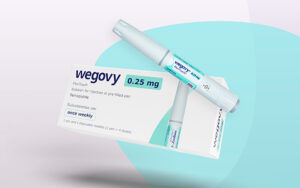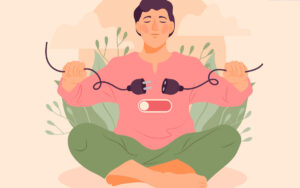At Gloow.care, we believe that mental well-being encompasses the body, mind, and spirit. While new treatments like ketamine therapy offer promising solutions for individuals with treatment-resistant depression (TRD), it’s important to understand how such treatments fit into a broader, holistic approach to wellness.
Ketamine, traditionally used as an anesthetic, is gaining traction for its ability to relieve symptoms of severe depression quickly, but how does it truly work, and is it the right path for you?
Here’s what you need to know about ketamine therapy for depression, including how it compares to other treatments and how it fits into a balanced wellness strategy.
Key Benefits of Ketamine Therapy in Holistic Mental Health:
- Rapid relief from depression symptoms, especially for those with TRD.
- Enhances neuroplasticity, helping the brain adapt and heal.
- Works differently from traditional antidepressants, offering an alternative for those who haven’t found relief with SSRIs.
- Can be integrated into a holistic mental health routine, including mindfulness, nutrition, and other natural therapies.
1. Ketamine Works Differently from Traditional Antidepressants
Unlike traditional antidepressants like SSRIs, which target serotonin levels, ketamine works by increasing glutamate, a neurotransmitter linked to learning, memory, and mood regulation. This increase in glutamate helps promote neuroplasticity—the brain’s ability to change and heal—which can lead to rapid improvements in depressive symptoms.
The quick onset of relief from ketamine is one of its most significant advantages. While SSRIs can take weeks to show effects, ketamine often provides relief within hours or days, making it especially valuable for those who need immediate help. However, for long-term well-being, ketamine therapy should be viewed as one piece of a holistic approach that includes practices like meditation, aromatherapy, and regular movement to sustain mental and physical health.
2. Various Forms of Ketamine Therapy Are Available
Ketamine can be administered in several forms, including intravenous (IV) infusions, nasal sprays, and intramuscular injections. The nasal spray version, esketamine (Spravato), is the only FDA-approved form specifically for depression, while other methods are often used off-label.
Each method has its pros and cons. IV infusions are widely considered the most reliable, delivering precise doses, while nasal sprays are more accessible but may be less effective depending on the patient’s technique. At-home treatments are sometimes available but are generally not recommended due to safety concerns related to heart rate, blood pressure, and the potential for dissociative effects.
As with all treatments, understanding how ketamine fits into a broader holistic mental health plan is essential. Ketamine may offer a fast solution, but supporting your mental health long-term requires daily attention to habits like mindfulness practices, nutrition, and emotional balance.
3. Best for Specific Mental Health Conditions
Ketamine therapy is primarily recommended for individuals with treatment-resistant depression (TRD) who have not found relief from other medications. It may also help with other conditions like anxiety, OCD, and bipolar disorder, though more research is needed to confirm its effectiveness for these.
It’s important to note that ketamine isn’t suitable for everyone. Individuals with a history of psychosis or certain other mental health conditions may experience worsening symptoms from ketamine due to its dissociative properties. For those without such conditions, however, the altered states of consciousness ketamine induces can foster new perspectives, contributing to its antidepressant effects.
To support these effects, we recommend pairing ketamine therapy with meditative practices, aromatherapy, or gentle yoga, which can help ground and calm the body after treatment.

4. Ketamine Is Not a Cure-All and Requires Integration
While ketamine can provide significant short-term relief, it is not a one-size-fits-all cure for depression. Its effects are highly individual, and long-term benefits vary. Many patients report feeling a sense of calm, reduced rumination, and enhanced mood after treatment, but this relief may not last indefinitely.
To get the most out of ketamine therapy, patients are encouraged to continue their existing mental health practices, whether it’s medication, therapy, or other forms of treatment. At Gloow.care, we emphasize the importance of integration—unpacking and reflecting on the experience through journaling, meditation, or working with a therapist who specializes in ketamine integration. Incorporating these strategies can help you process the emotional and psychological shifts ketamine induces, ensuring a more lasting impact.
Ketamine therapy offers a promising alternative for those with treatment-resistant depression, providing rapid relief where traditional therapies may fall short. However, as part of Gloow.care’s philosophy, we believe in integrating modern treatments with ancient wisdom and holistic self-care practices. Whether it’s through aromatherapy, mindful movement, or supportive nutrition, maintaining balance and wellness in your daily life remains key.
If you’re considering ketamine therapy, consult with a healthcare provider to explore whether this treatment fits into your personalized mental health strategy, and remember to keep supporting your body and mind through complementary holistic practices.



































